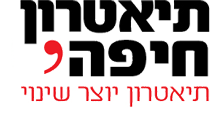The Clandestine Immigration and Naval Museum
The Clandestine Immigration and Naval Museum, Haifa
This museum is dedicated to telling the story of the struggle for the right to immigrate to Israel during the years 1934 – 1948 when the British Mandate was in operation. This is a chapter of our history which deals with Jewish clandestine immigration and the right to settle here. It is one of the cornerstones of the establishment of the State of Israel. This story is displayed in our museum and includes: historic documents, newspaper clippings, photos, original models, audio visual materials and films. In order to bring home the impact of this landmark in Israeli history, we use a computerized map of the various routes taken by the clandestine vessels, so that we can follow in their footsteps and thus view the story of these secret boats in its entirety. For example, we have on display the clandestine immigrant ship, the "Af al Pi Chen," (which can be translated as 'In spite of all that'), both as an exhibit and also as the venue for a sound and light show (son et lumière) which we call 'from beach to beach.'
A special wing of the museum is devoted to the history of the Israeli navy, whose roots go back to this very clandestine immigration operation at the time of the British Mandate. Also included in this naval display are photos, certificates, sketches of skirmishes with the British authorities, models of the ships, original exhibits, and finally, examples of arms and weaponry which were used in naval warfare during that time. In the yard which leads to the entrance to the ship, you can see the towering figure of the bridge of the submarine, the INS Dakar, which was retrieved from the water at the very site where it went under, from the astonishing depth of 3,000 meters. The entrance hall is used as a meeting place for various visiting groups. Here you can find a number of important exhibits, including a model of the famous immigration ship, the Exodus.
The clandestine immigration ship, the Af al Pi Chen (in spite of all that) played its own part during the Second World War as a landing craft for tanks. It was then converted into a clandestine immigration ship by the people who were instrumental in organizing the Second Aliyah (the Mossad le-Aliyah Bet). The ship has been preserved in its entirety, both its external structure and its fittings and accessories. What's more, in the ship's lower deck, reconstructions have been made in the original bunks, the water distribution point and the radio control room (code-named the 'Gideoni').
The first section of this naval exhibition deals with the early beginnings of Israel's navy. This includes the story of the people who created the navy, as well as how the illegal immigration ships were transformed into war ships. It is hard to believe that it was these people in these very vessels who actually realized their dream, the creation of the State of Israel in 1948. One of the most outstanding examples in this section is the amazing story of the naval operation which was code-named 'Shoded'. There is also a description of the sinking of the Egyptian flagship by Israeli commando boats, as well as the INS Eilat 16a - a ship dating from the First World War – in the first battle ever to take place in our naval history.
The second section depicts the 1950s, when Israel's navy fleet first set sail throughout the length and breadth of the ocean deep, while the commando ships were gradually becoming more and more refined. Israel's navy played its part in the Sinai War, even gaining significant reinforcements from an unexpected source to add to the already-existing number of destroyers. At the end of the decade, a very determined and inspired military officer, named Yosele Daror, possessing great foresight and vision, established Israel's flotilla of submarines. One of the most important exhibits in this second section is a depiction of the surrender of the Egyptian destroyer, theIbrahim Al Awal, which can be found on the original table of the ship's combat center. Next to the table you can find several items which belonged to members of the naval commando. These include examples of their equipment and uniforms.
The third section deals with the 1960s and the beginning of the 1970s. Starting with the stinging naval failures of the Six Day War, which were followed by two disasters in which heavy naval casualties were inflicted, the Israeli navy implemented dramatic changes which culminated in the truly astounding victories of the Yom Kippur War.
One of the most outstanding exhibits in this section is the Dakar submarine emergency buoy, which was discovered a year after the submarine sank. The submarine itself, however, was not discovered for many years afterwards, despite the extensive searches for it. In addition, you can view the uniform which belonged to the submarine's crew member, Yosef 'Almog' Suisa, which was found in close proximity to the sunken submarine.
The fourth section describes the progress of the Yom Kippur War, the coastal bombardment against the enemy and the fighting in the area of the Red Sea. In addition, you will be able to view a depiction of the operation known as 'Peace in Galilee,' which became the First Lebanese War (1982), as well as the war against terrorism. One of the most important exhibits in this section is a tank which was used to smuggle weapons, one of eighty such tanks which were captured in 2002 on the terrorist ship, the Karine A. Outside, on the grounds of the museum, are displayed some very large items, which are too big for the museum itself. These are heavyweight guns and cannons which made history, enemy ships, terrorist boats and, at the far end, the INS Mivtach, the first Israeli missile boat.
Address: 204, Allenby Rd, Haifa, postcode: 35472
Telephone: 04 – 8536249
Details
hahagana 65 haifa













